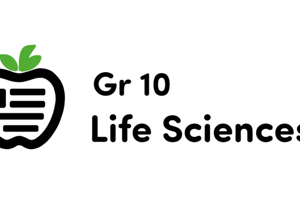Podcast
Questions and Answers
Why do energy pyramids typically have fewer organisms at higher trophic levels compared to lower levels?
Why do energy pyramids typically have fewer organisms at higher trophic levels compared to lower levels?
- Organisms at higher trophic levels require less energy to survive.
- Producers synthesize energy more efficiently than consumers.
- Decomposers consume a larger portion of the biomass at lower trophic levels.
- Energy is lost as heat and metabolic processes when transferred between trophic levels. (correct)
In a forest ecosystem, which of the following organisms would occupy the lowest level of the energy pyramid?
In a forest ecosystem, which of the following organisms would occupy the lowest level of the energy pyramid?
- Snakes
- Hawks
- Trees (correct)
- Foxes
According to the ten percent rule, if the producer level in an ecosystem has 10,000 kcal of energy, approximately how much energy is available to the secondary consumers?
According to the ten percent rule, if the producer level in an ecosystem has 10,000 kcal of energy, approximately how much energy is available to the secondary consumers?
- 1 kcal
- 100 kcal (correct)
- 1,000 kcal
- 10 kcal
How would the removal of secondary consumers from an ecosystem most likely affect the energy pyramid?
How would the removal of secondary consumers from an ecosystem most likely affect the energy pyramid?
Which of the following statements correctly describes the flow of energy through an energy pyramid?
Which of the following statements correctly describes the flow of energy through an energy pyramid?
In a coral reef ecosystem, which trophic level would sharks occupy?
In a coral reef ecosystem, which trophic level would sharks occupy?
What primary role do decomposers play in an energy pyramid?
What primary role do decomposers play in an energy pyramid?
Which of the following best describes the primary purpose of an energy pyramid?
Which of the following best describes the primary purpose of an energy pyramid?
If producers capture 100% of the sun's energy, approximately what percentage of that original energy is available to tertiary consumers, according to the energy pyramid model?
If producers capture 100% of the sun's energy, approximately what percentage of that original energy is available to tertiary consumers, according to the energy pyramid model?
In an energy pyramid, the base level is occupied by which type of organism, and what is their primary role?
In an energy pyramid, the base level is occupied by which type of organism, and what is their primary role?
Why is energy transfer between trophic levels in an energy pyramid so inefficient?
Why is energy transfer between trophic levels in an energy pyramid so inefficient?
What is the key difference between a food chain and a food web?
What is the key difference between a food chain and a food web?
If the primary consumers in an ecosystem have 1000 kcal of energy, how much energy is likely to be available to the secondary consumers?
If the primary consumers in an ecosystem have 1000 kcal of energy, how much energy is likely to be available to the secondary consumers?
An ecosystem has a large population of primary consumers. What is the most likely consequence if the producer population significantly declines?
An ecosystem has a large population of primary consumers. What is the most likely consequence if the producer population significantly declines?
Which of the following is true regarding the amount of energy available at each trophic level in an energy pyramid?
Which of the following is true regarding the amount of energy available at each trophic level in an energy pyramid?
Flashcards
Energy Pyramid
Energy Pyramid
A diagram showing energy transfer in an ecosystem.
Ecosystem
Ecosystem
Living and non-living things in an area, interacting as a unit.
Trophic Level
Trophic Level
An energetic level in an ecosystem.
Producers
Producers
Signup and view all the flashcards
Primary Consumers
Primary Consumers
Signup and view all the flashcards
Secondary Consumers
Secondary Consumers
Signup and view all the flashcards
Tertiary Consumers
Tertiary Consumers
Signup and view all the flashcards
10% Rule in Energy Transfer
10% Rule in Energy Transfer
Signup and view all the flashcards
Decomposers
Decomposers
Signup and view all the flashcards
Ten Percent Rule
Ten Percent Rule
Signup and view all the flashcards
Trophic Level & Population
Trophic Level & Population
Signup and view all the flashcards
Energy Pyramid Diagram
Energy Pyramid Diagram
Signup and view all the flashcards
Producers (Forest)
Producers (Forest)
Signup and view all the flashcards
Primary Consumers (Forest)
Primary Consumers (Forest)
Signup and view all the flashcards
Producers (Coral Reef)
Producers (Coral Reef)
Signup and view all the flashcards
Study Notes
- An energy pyramid is a diagram illustrating energy transfer within an ecosystem.
- Lower levels of the pyramid, which are larger, represent greater energy content in the ecosystem.
- An ecosystem encompasses all living and non-living components in a specific area.
Trophic Levels
- Ecosystems are divided into energetic tiers called trophic levels.
- Producers, which create their own food, form the base trophic level.
- Primary consumers feed on producers.
- Secondary consumers consume primary consumers.
- Tertiary consumers prey on secondary consumers.
Food Chains and Webs
- Food chains depict predatory relationships between individual species.
- Food webs are complex diagrams showing interconnected food chains.
Purpose of Energy Pyramids
- Energy pyramids quantify energy flow within an ecosystem.
- They demonstrate how energy is transferred between trophic levels, showing which levels have more or less energy.
Energy Transfer
- Energy transfer between trophic levels occurs through predation.
- All energy originates from the sun.
- Producers absorb 100% of the sun's energy, utilizing 90% for growth, reproduction, and life processes, with some lost as heat.
- The remaining 10% is available to organisms that consume producers.
Energy Flow at Each Level
- Producers receive 100% of available solar energy, using 90% and leaving 10% for the next level.
- Primary consumers obtain 10% of the energy from producers.
- Secondary consumers receive 10% of the energy from primary consumers, equating to 1% of the total energy.
- Tertiary consumers get 10% of the energy from secondary consumers, which is 0.1% of the total energy.
- Decomposers recycle nutrients by collecting remaining energy from dead organisms.
Ten Percent Rule
- Only 10% of energy is transferred from one trophic level to the next.
- Energy availability decreases moving up the energy pyramid.
- Higher trophic levels support fewer organisms due to reduced energy.
- Forest ecosystems have more producers (grass, trees) than tertiary consumers (hawks), because producers have access to 100% of the solar energy, but teriary consumers have access to 0.1%.
Energy Pyramid Diagram
- The diagram is triangle-shaped with horizontal sections.
- The producer level, containing the most energy, occupies the largest bottom section.
- Subsequent levels decrease in size, reflecting the decrease in energy with each trophic level.
Deciduous Forest Example
- Green plants (grass, trees, shrubs) at the producer level contain 100% of the sun's energy.
- Primary consumers (grasshoppers, deer, rabbits) are herbivores.
- Secondary consumers (foxes, snakes) eat primary consumers.
- Tertiary consumers (hawks, wolves) are top predators.
Coral Reef Example
- Phytoplankton (photosynthetic algae) are the producers.
- Microscopic organisms are primary consumers.
- Small fish and crustaceans are secondary consumers.
- Sharks, dolphins, and sea snakes are tertiary consumers and top predators.
Studying That Suits You
Use AI to generate personalized quizzes and flashcards to suit your learning preferences.
Description
Explore energy pyramids, trophic levels, and food chains/webs within ecosystems. Understand how energy pyramids quantify energy flow, illustrating energy transfer between trophic levels. Discover the roles of producers, consumers, and their relationships in food chains and webs.




